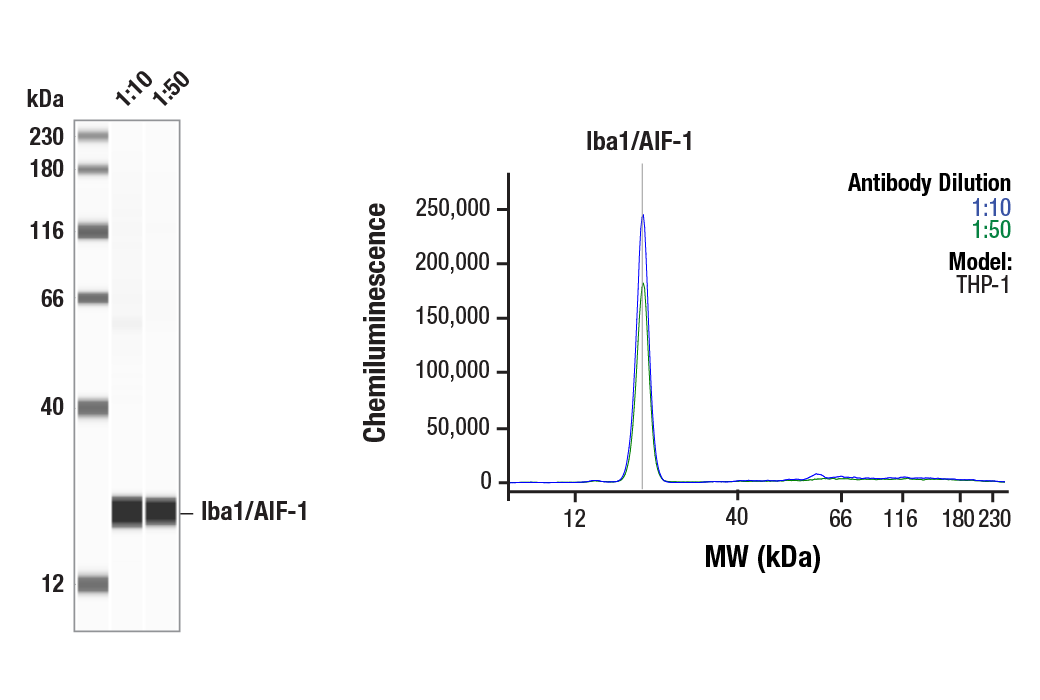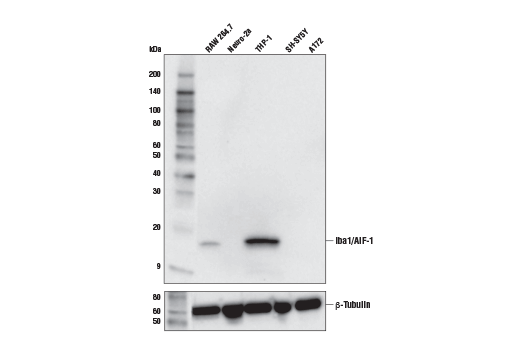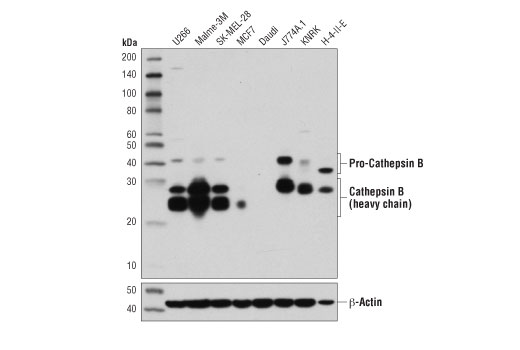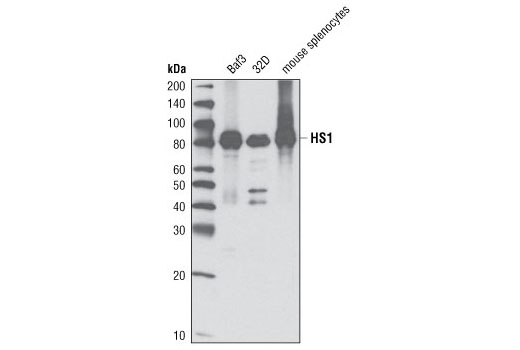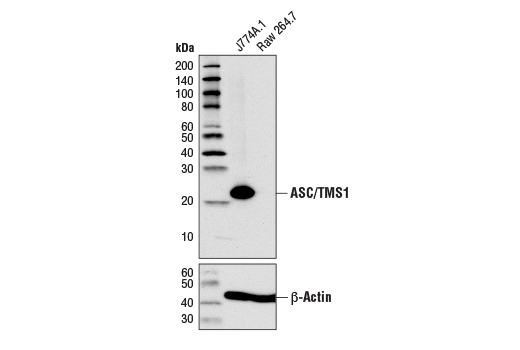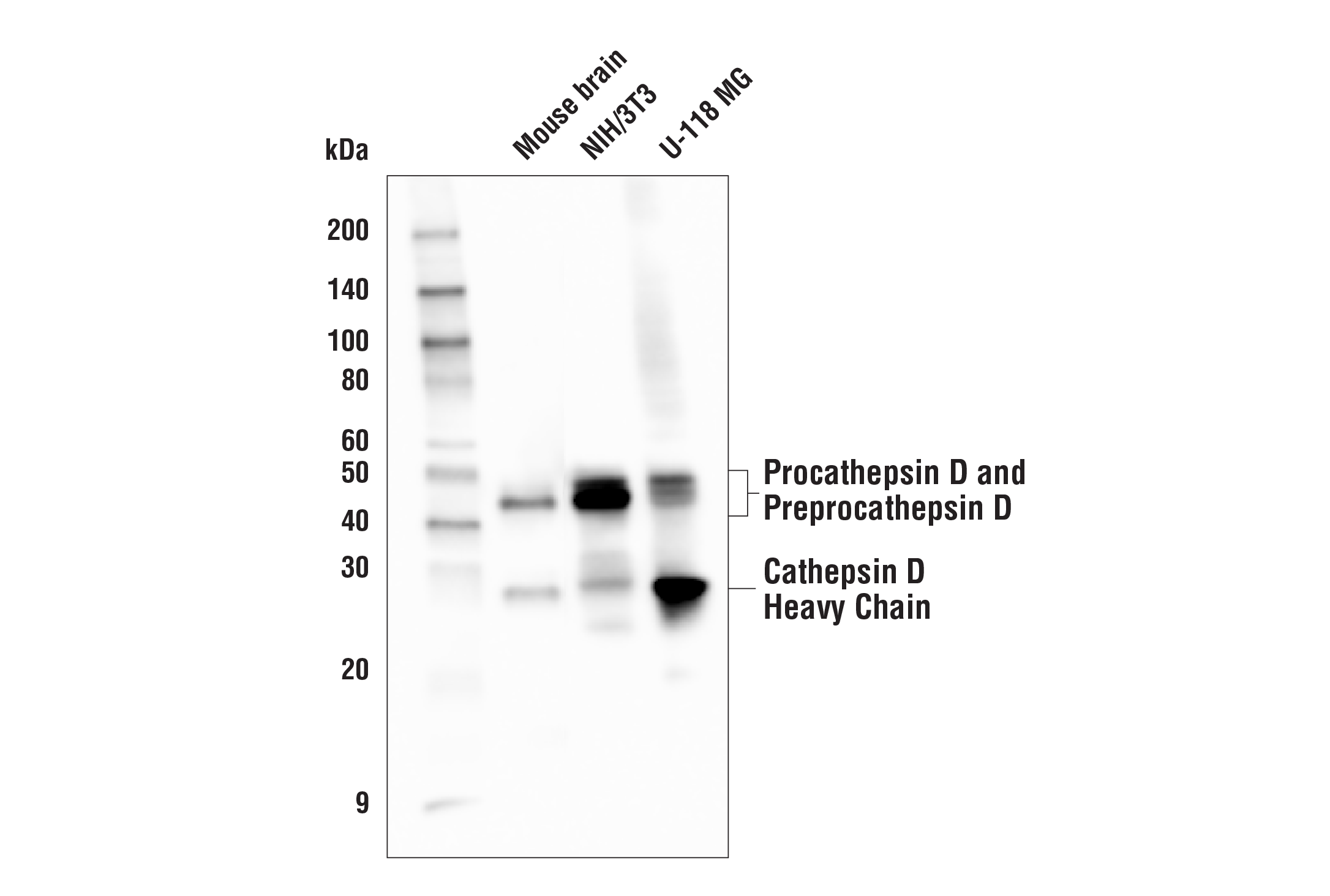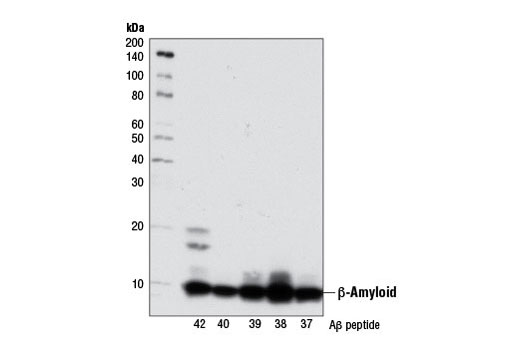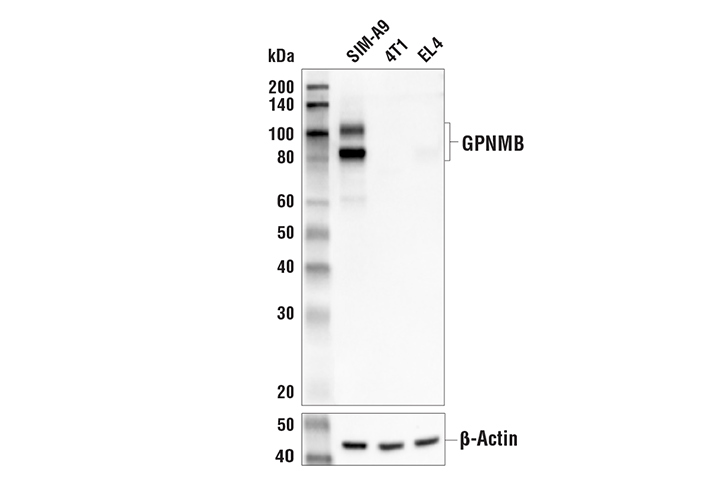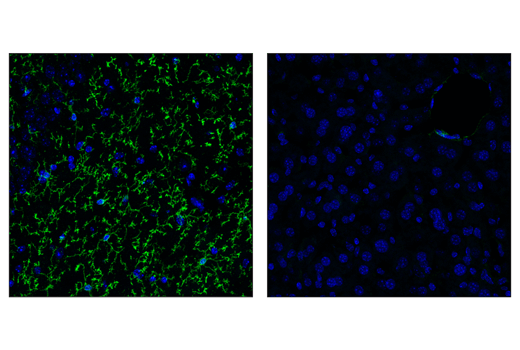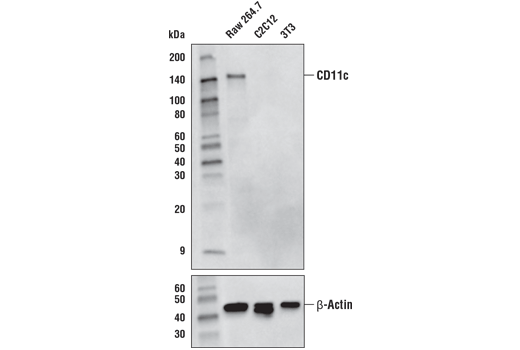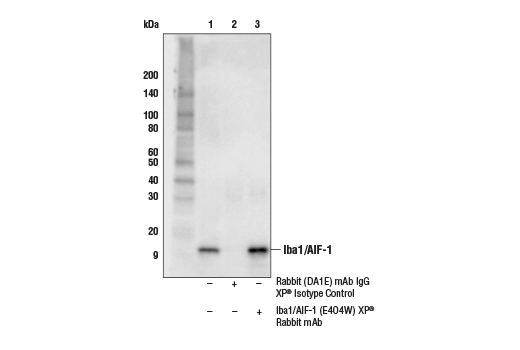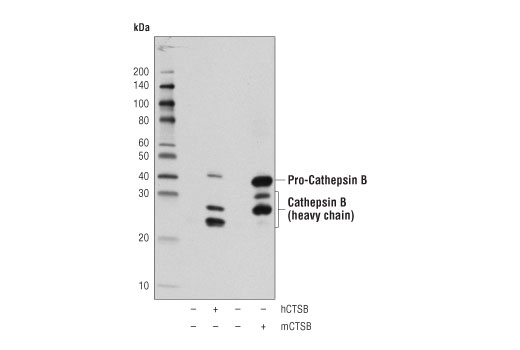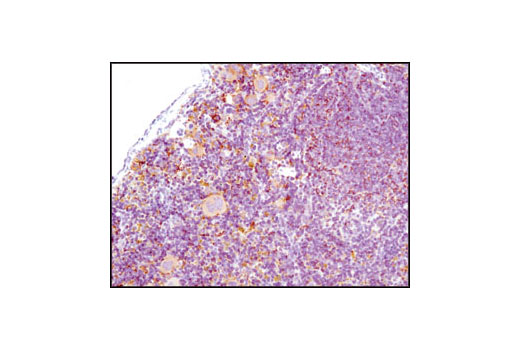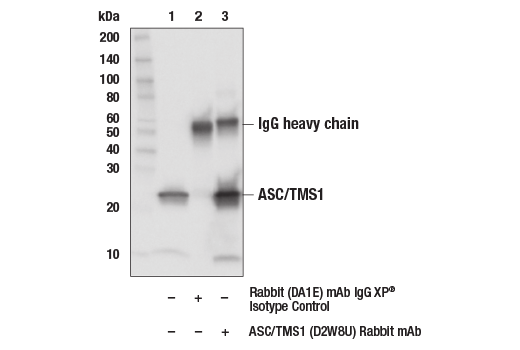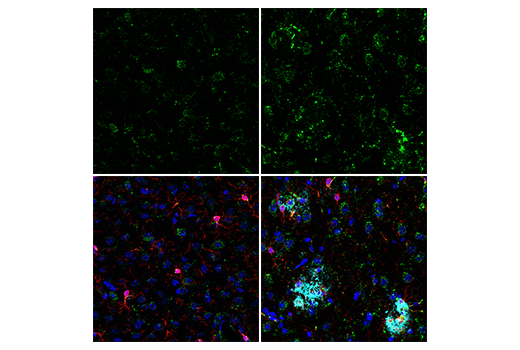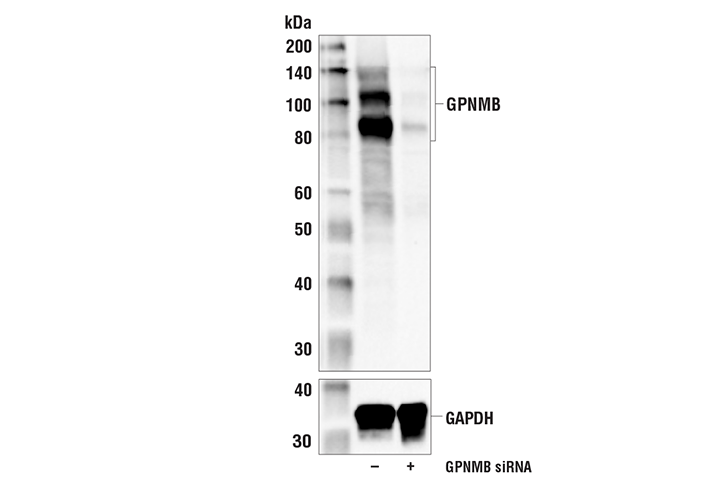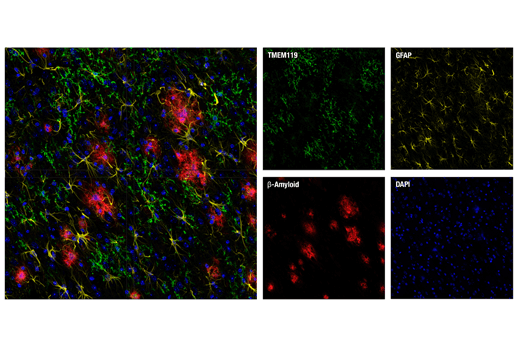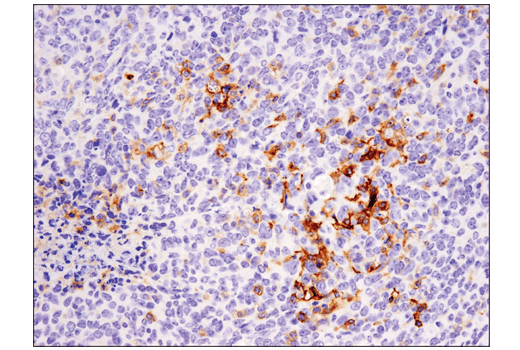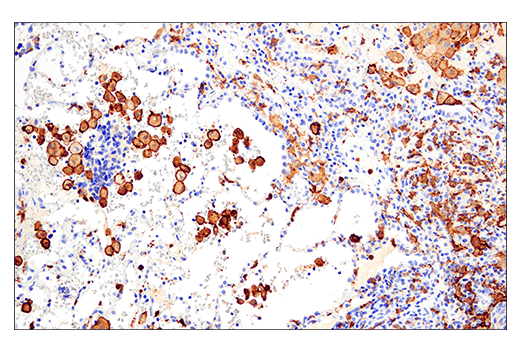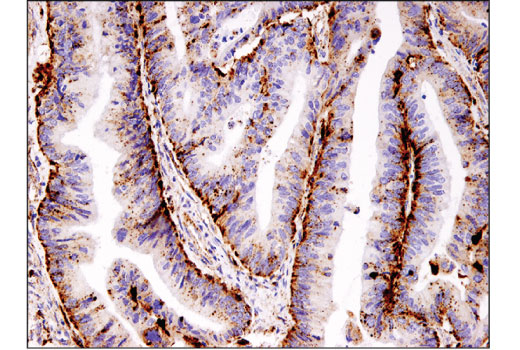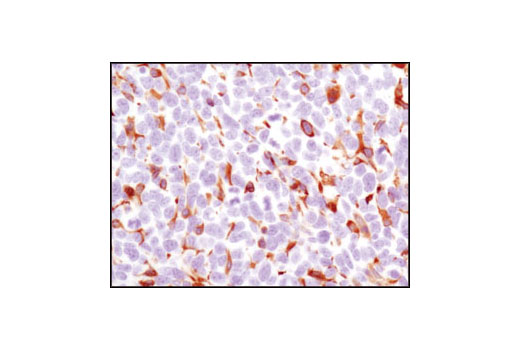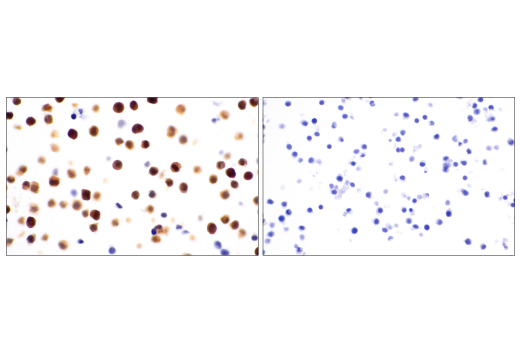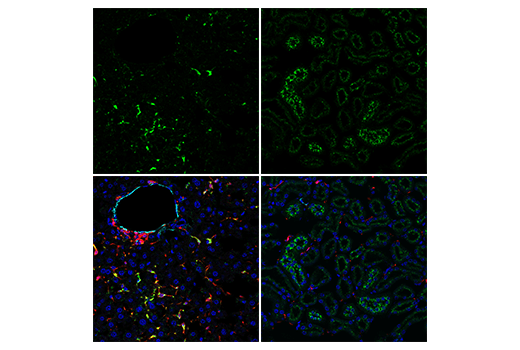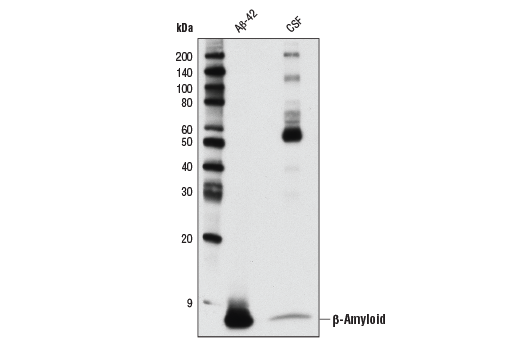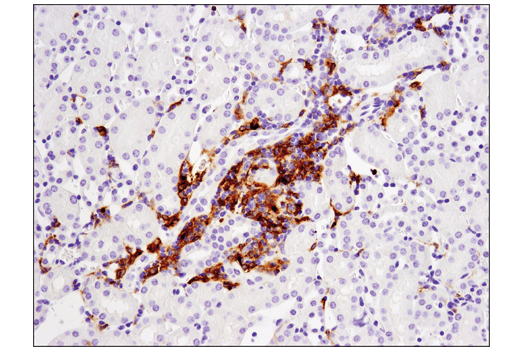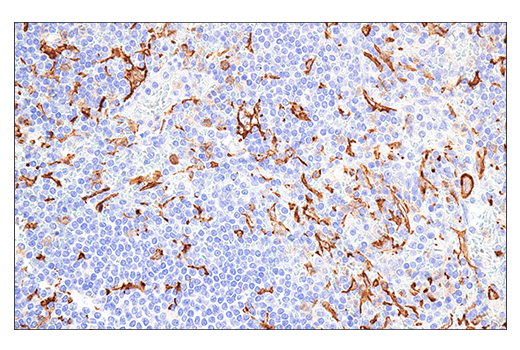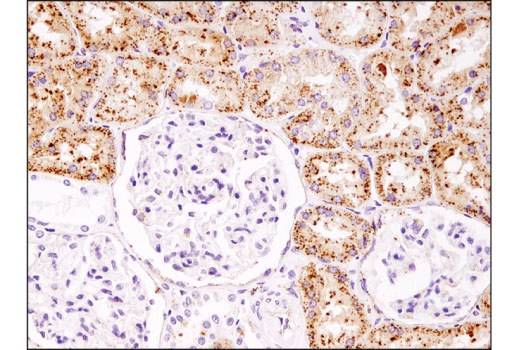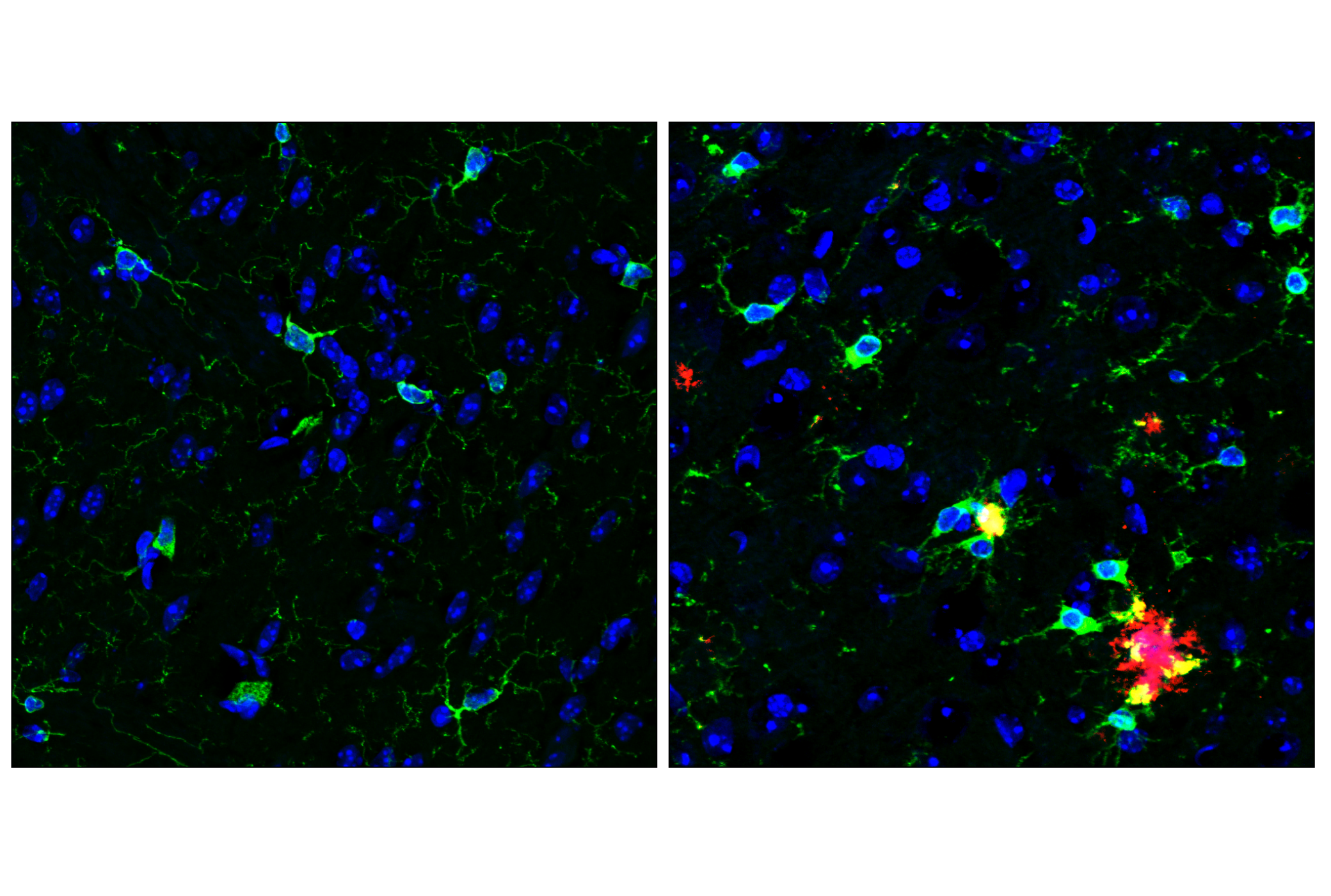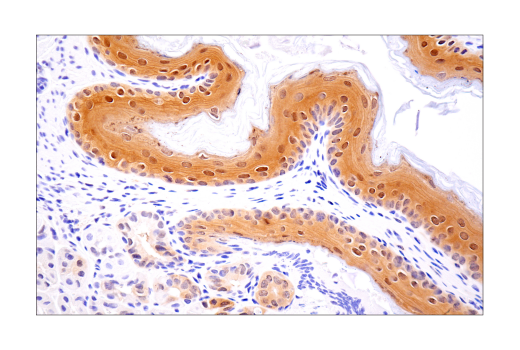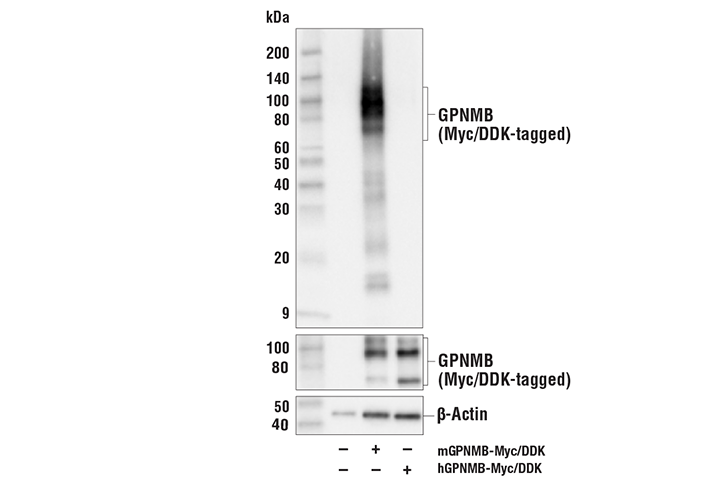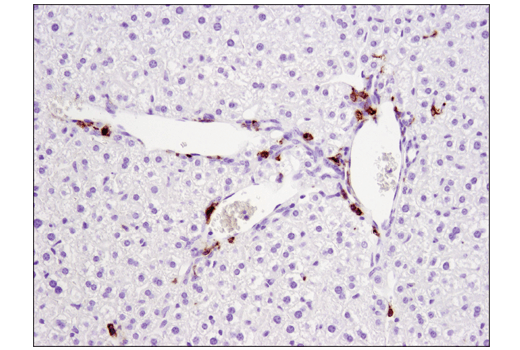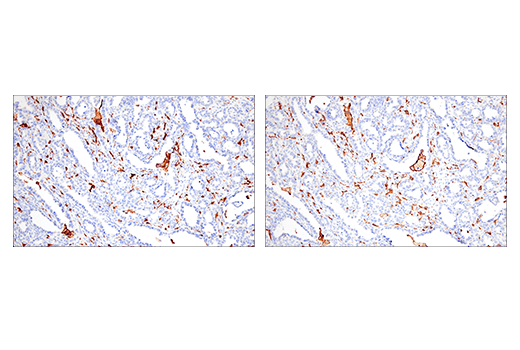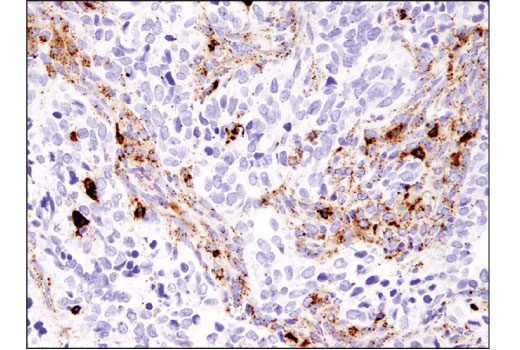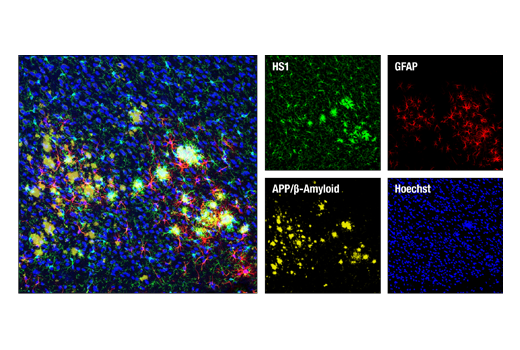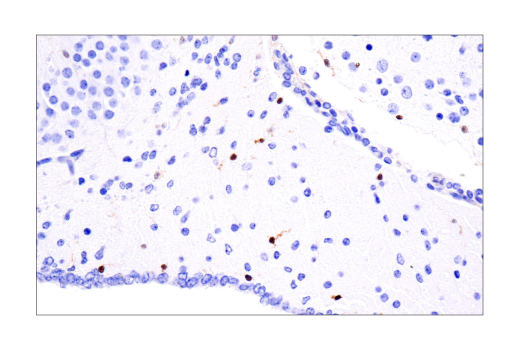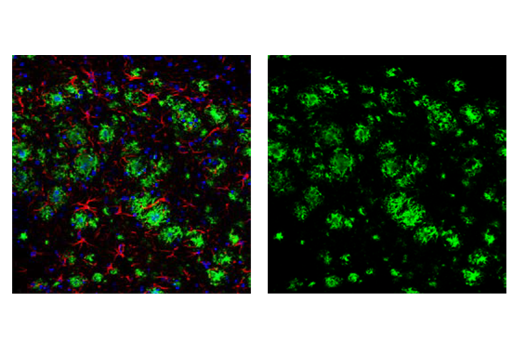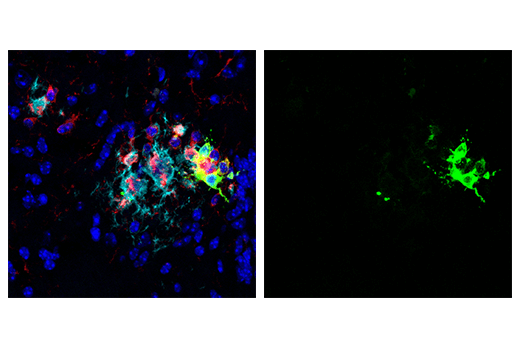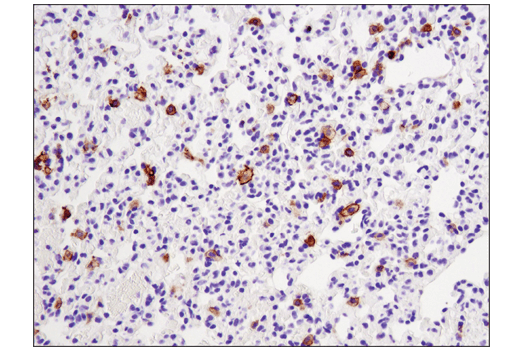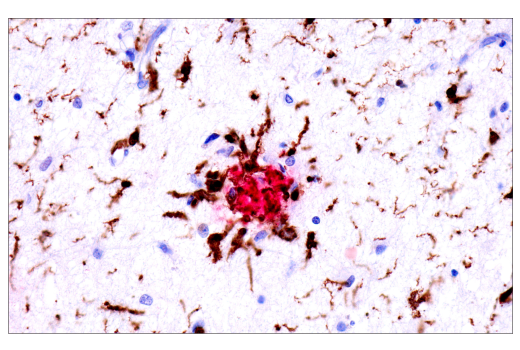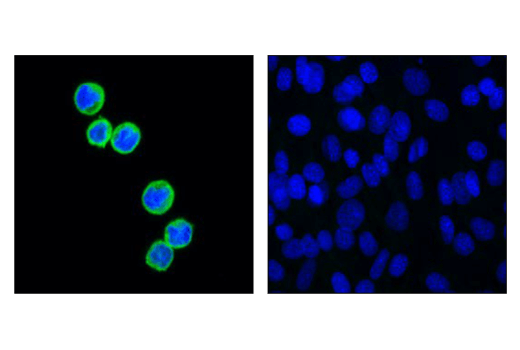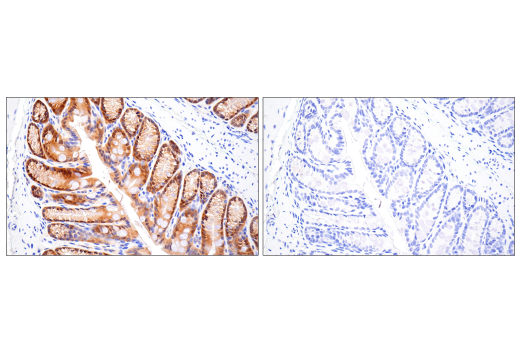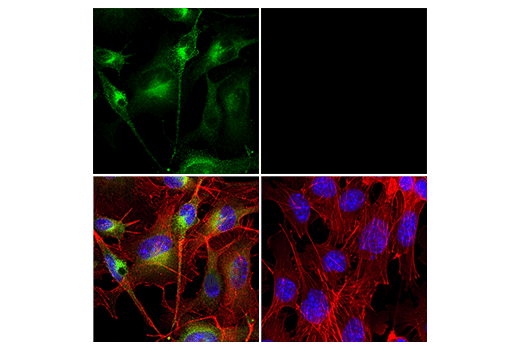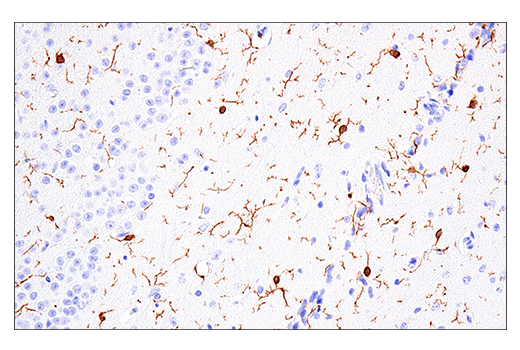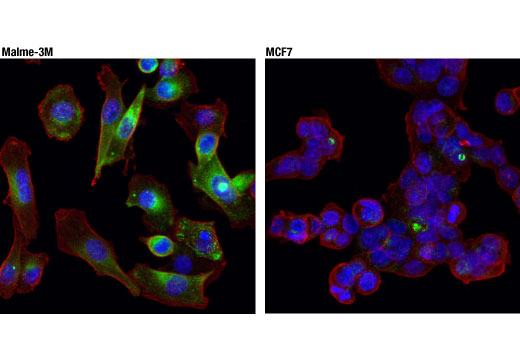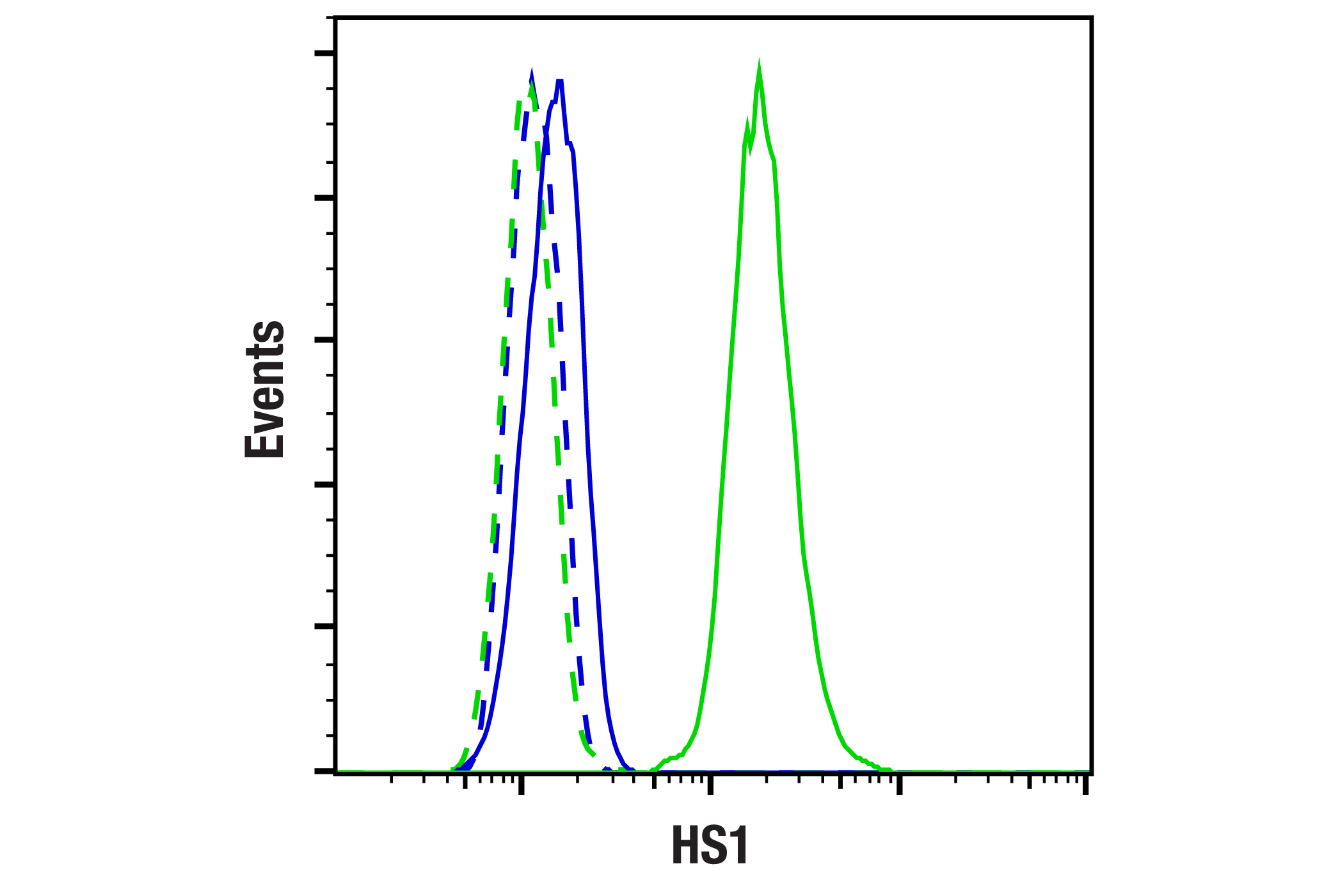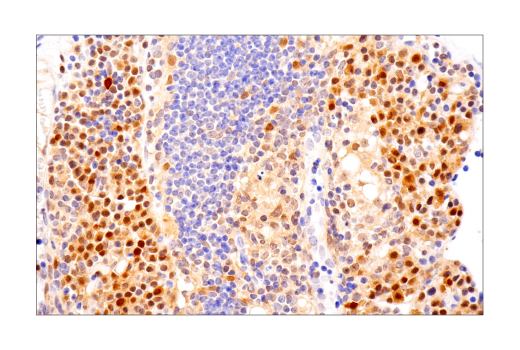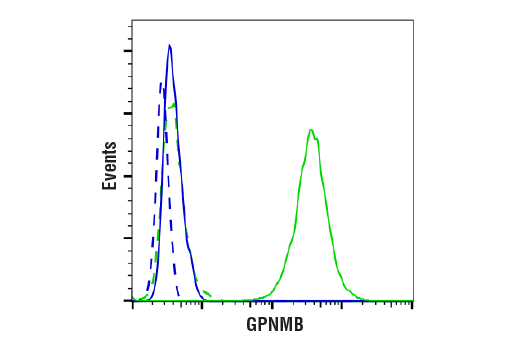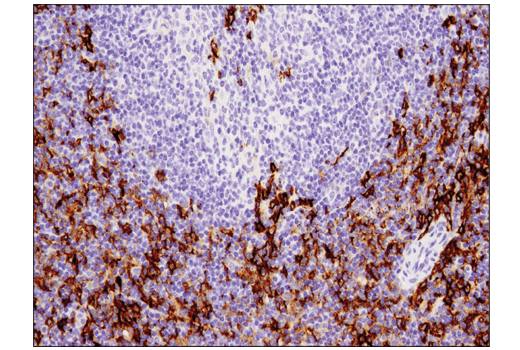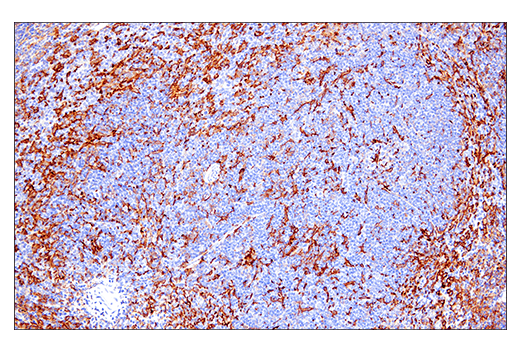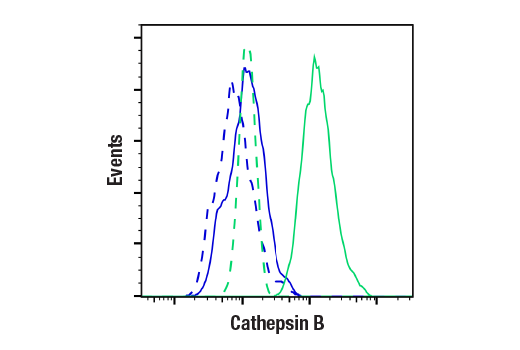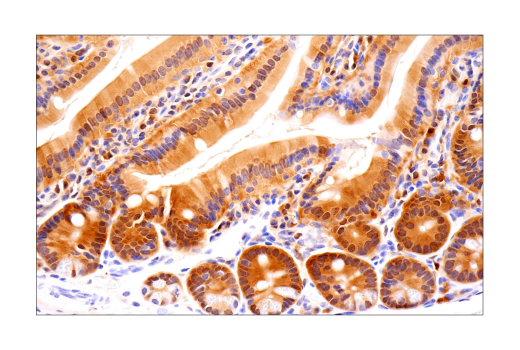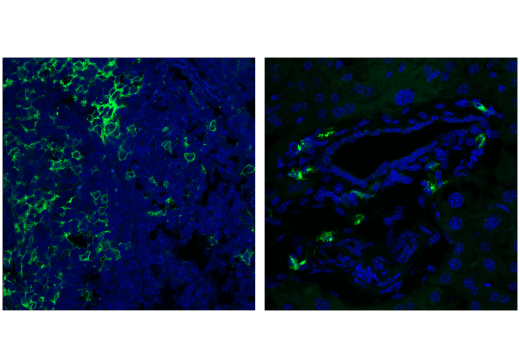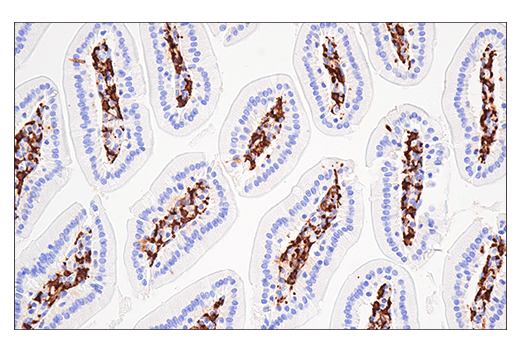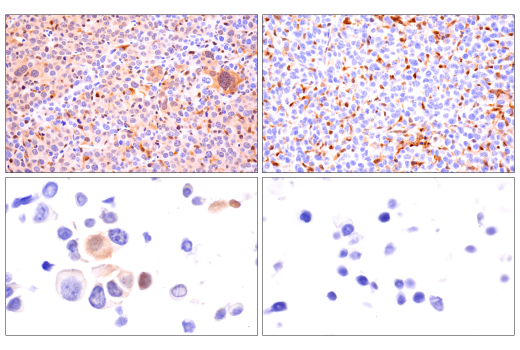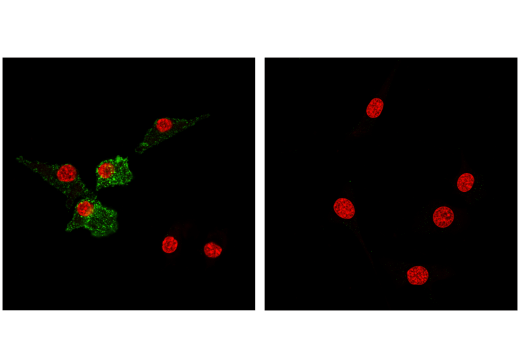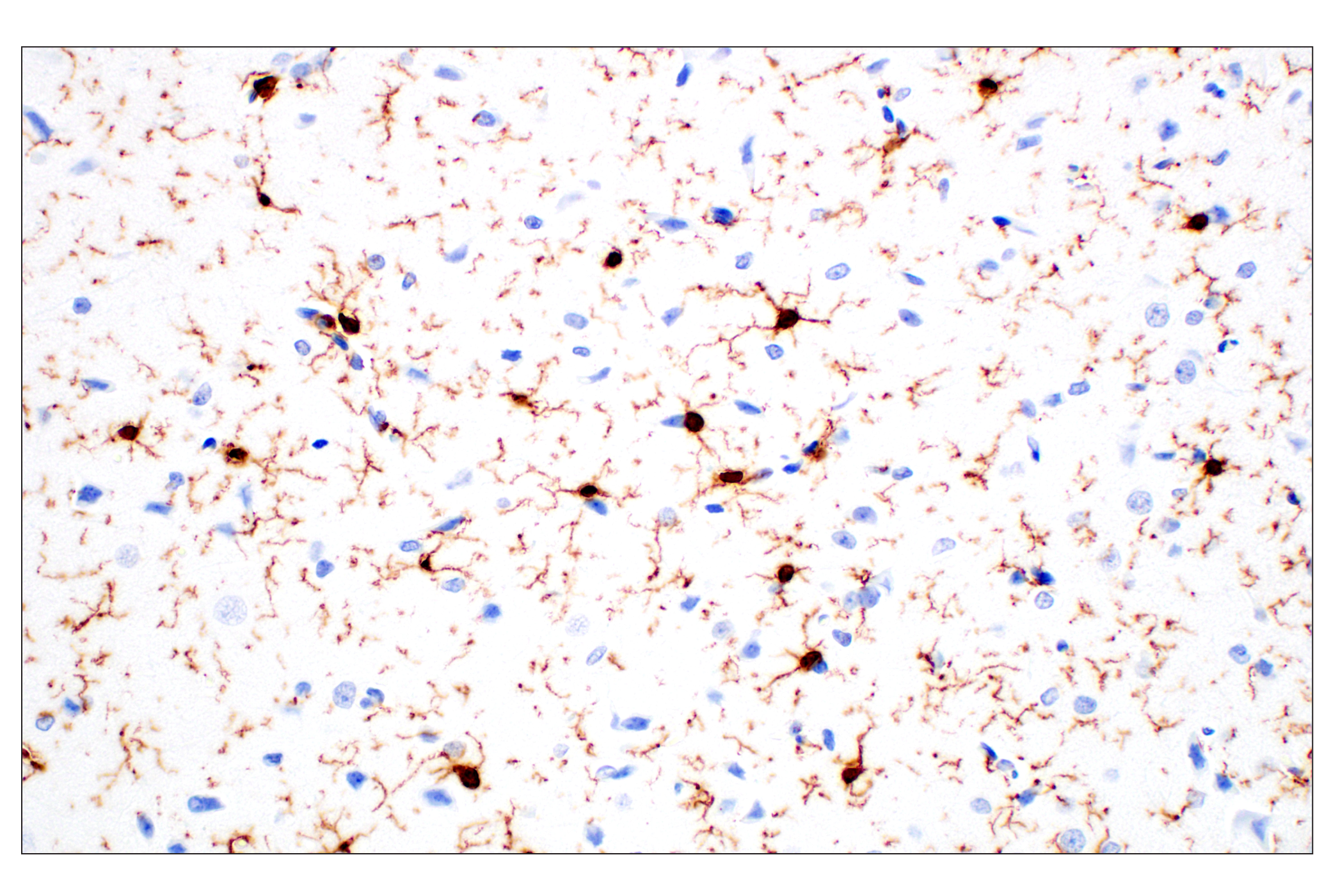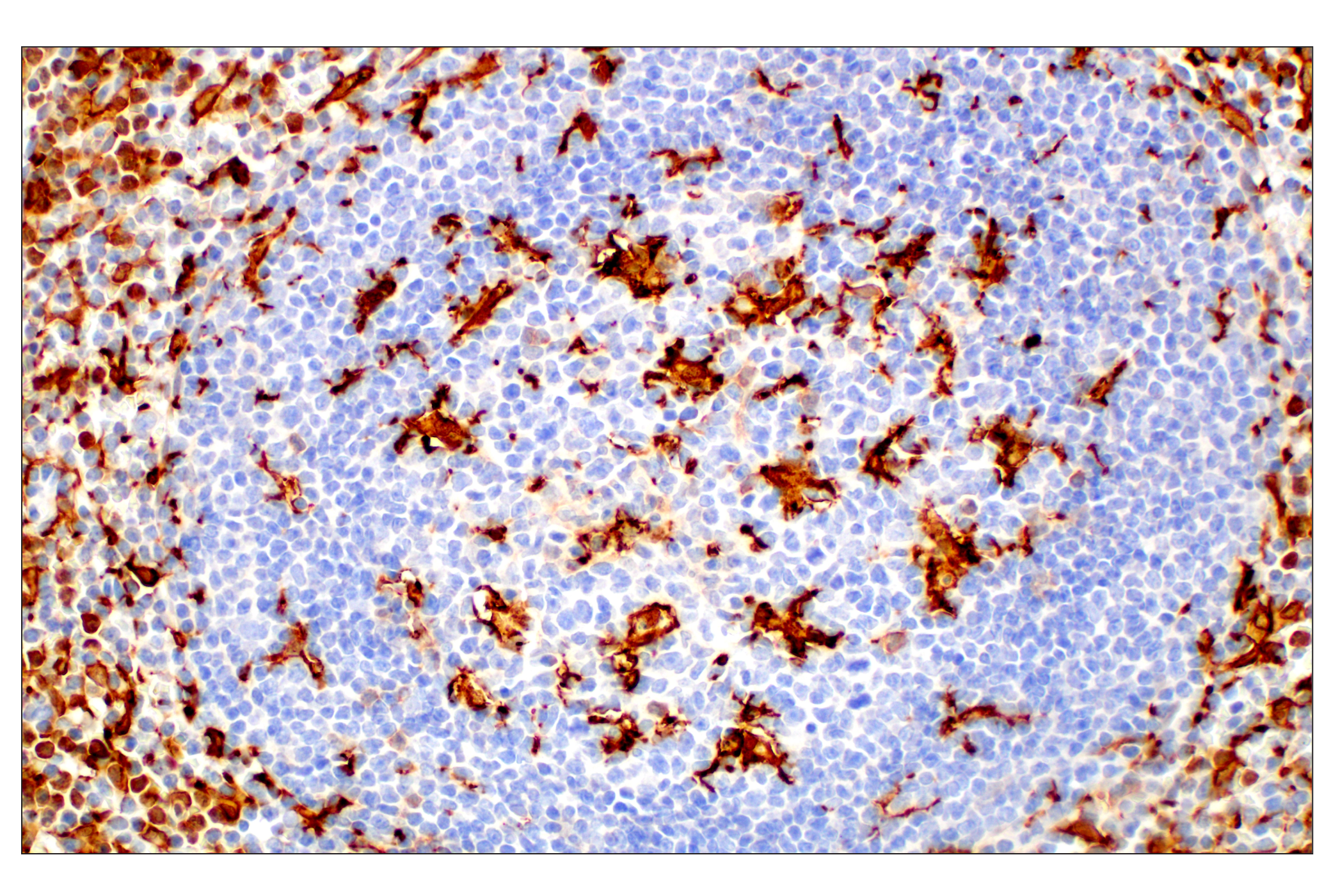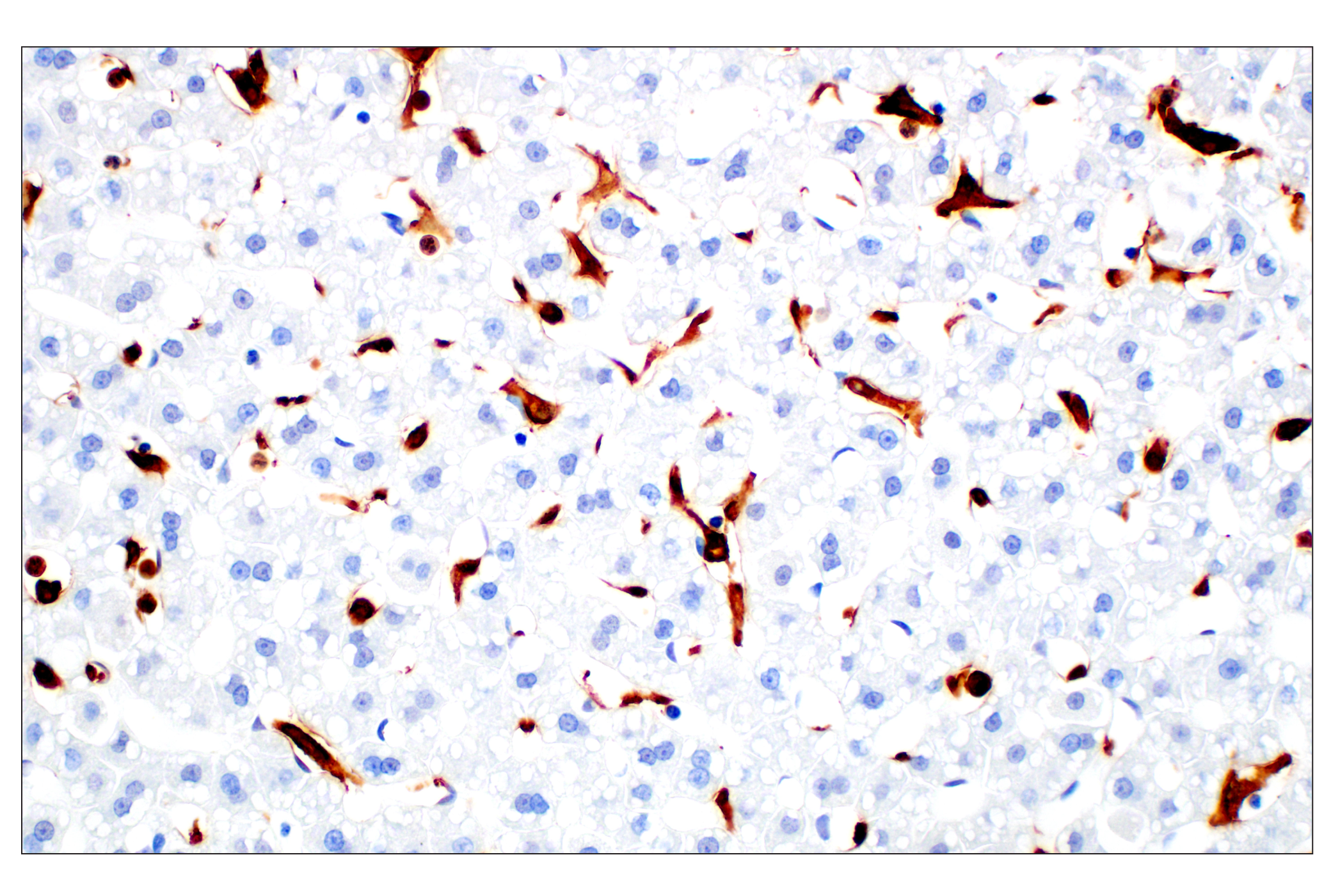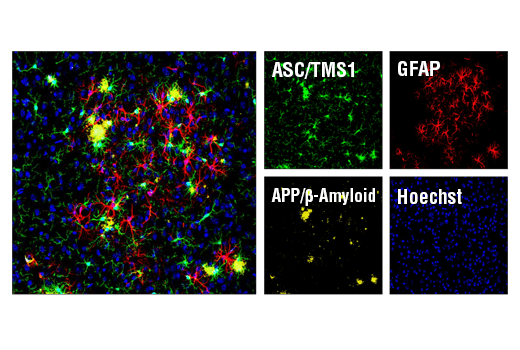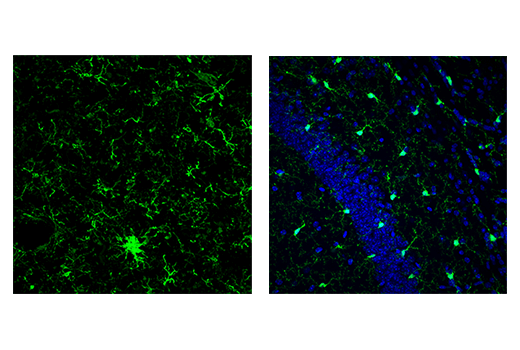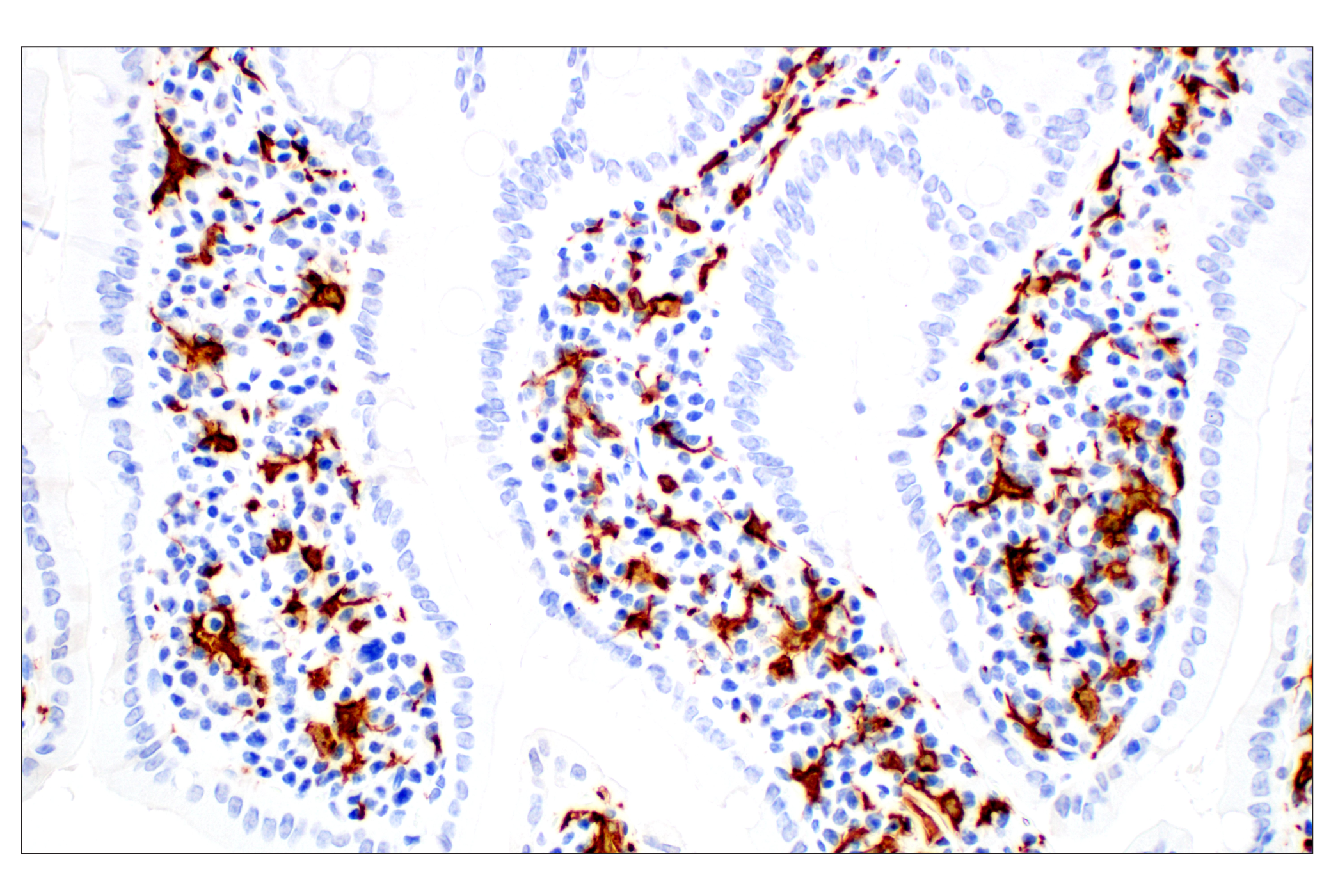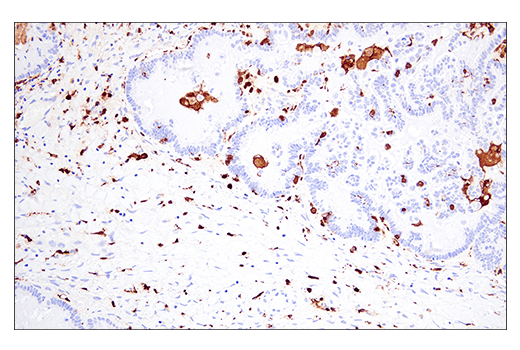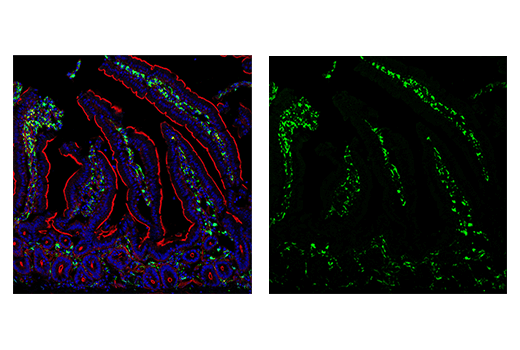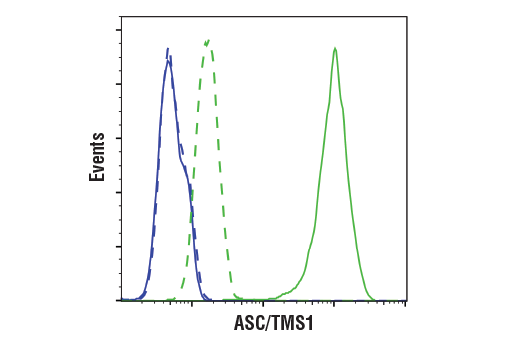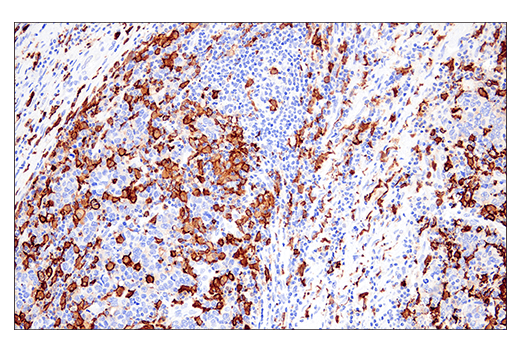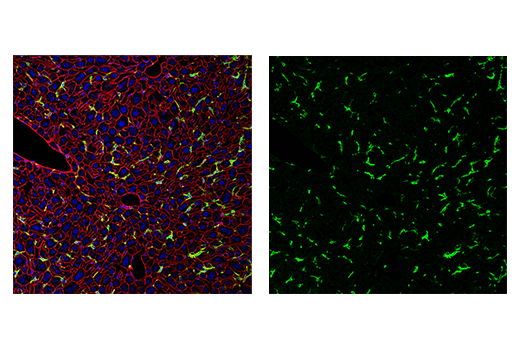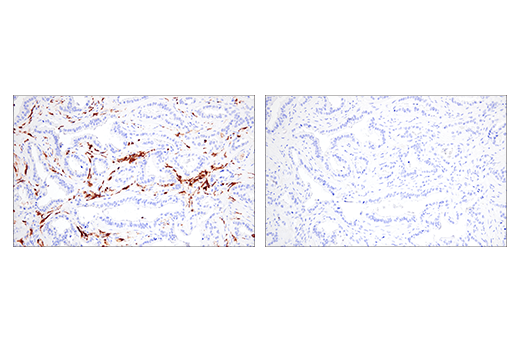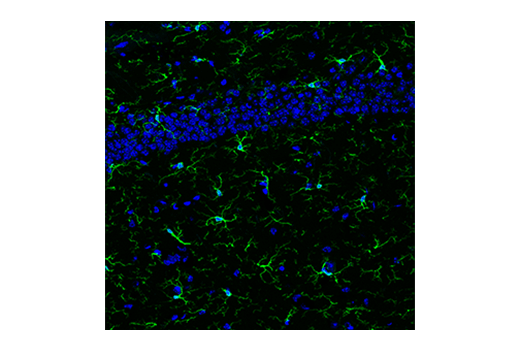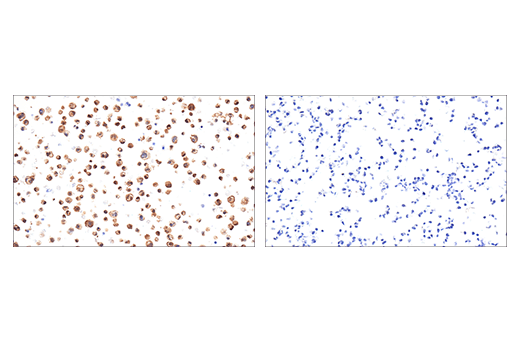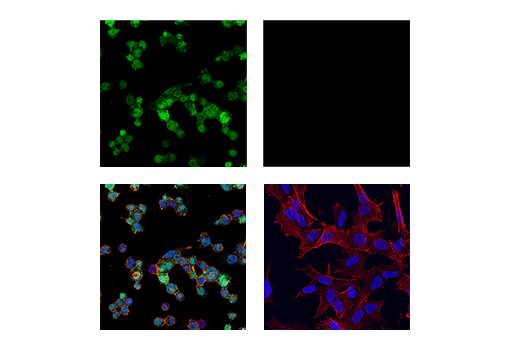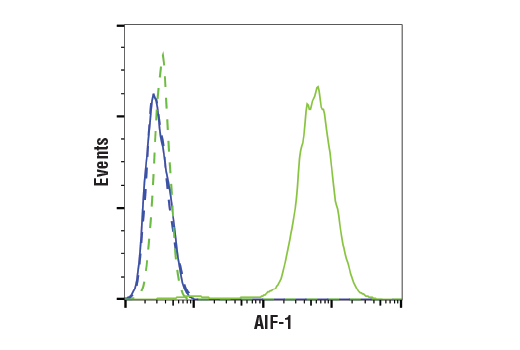| Product Includes | Product # | Quantity | Mol. Wt | Isotype/Source |
|---|---|---|---|---|
| Iba1/AIF-1 (E4O4W) XP® Rabbit mAb | 17198 | 20 µl | 17 kDa | Rabbit IgG |
| TMEM119 (E3E1O) Rabbit mAb | 90840 | 20 µl | Rabbit IgG | |
| β-Amyloid (D54D2) XP® Rabbit mAb | 8243 | 20 µl | 5 kDa | Rabbit IgG |
| GPNMB (E7U1Z) Rabbit mAb | 90205 | 20 µl | 90, 100 kDa | Rabbit IgG |
| CD11c (D1V9Y) Rabbit mAb | 97585 | 20 µl | 145 kDa | Rabbit IgG |
| HS1 (D5A9) XP® Rabbit mAb | 3892 | 20 µl | 80 kDa | Rabbit IgG |
| Cathepsin B (D1C7Y) XP® Rabbit mAb | 31718 | 20 µl | 44, 27, 24 kDa | Rabbit IgG |
| Cathepsin D (E179) Antibody | 69854 | 20 µl | 46, 43, 28 kDa | Rabbit |
| ASC/TMS1 (D2W8U) Rabbit mAb | 67824 | 20 µl | 22 kDa | Rabbit IgG |
| Anti-rabbit IgG, HRP-linked Antibody | 7074 | 100 µl | Goat |
Please visit cellsignal.com for individual component applications, species cross-reactivity, dilutions, protocols, and additional product information.
Description
The Mouse Reactive Alzheimer's Disease Model Microglia Phenotyping IF Antibody Sampler Kit provides an economical means of detecting microglia proteins in β-Amyloid mouse models of Alzheimer’s Disease (AD) by immunofluorescence and/or western blot. This kit includes enough primary antibodies to perform at least twenty IF-F tests or two western blot experiments per primary antibody.
Storage
Background
Distinct microglial activation states have been identified using RNA-seq data from a vast array of neurological disease and aging models. In both mouse models of Alzheimer’s Disease (AD) and AD patients, unique microglia molecular signatures are associated with disease progression (1-3). AD progression is correlated with the extracellular deposition and accumulation of the released Aβ fragments, derived from the transmembrane glycoprotein Amyloid β (Aβ) precursor protein (APP), that form amyloid plaques, the pathological hallmark of AD (4). Microglia are the resident macrophages of the brain and contribute to neurodegenerative disease (5). Ionized calcium-binding adaptor molecule 1 (Iba1), also known as allograft inflammatory factor 1 (AIF-1), is uniquely expressed in cells of monocytic lineage and is, therefore, widely used as a marker for microglia/macrophages in the brain and other tissue (6,7). HS1 (HCLS1, LckBP1, p75) is a protein kinase substrate that is expressed only in tissues and cells of hematopoietic origin and is also expressed in microglia (8,9). Transmembrane protein 119 (TMEM119) is a cell-surface protein of unknown function, expressed exclusively by the microglia subset of myeloid and neural cells (10). Iba1+ microglia with both ramified and amoeboid morphologies express TMEM119, while Iba1+ macrophages are TMEM119 negative (11). TMEM119 and other homeostatic genes have been shown to be downregulated in microglia. In addition to general markers of microglia, several microglia genes are upregulated during disease progression (12). CD11c (integrin αX, ITGAX) is a transmembrane glycoprotein that forms an α/β heterodimer with CD18 (integrin β2), which interacts with a variety of extracellular matrix molecules and cell surface proteins (13). CD11c-positive microglia transcriptionally correlate with amyloid plaques (14). In addition, other genes are upregulated in a similar manner. Glycoprotein non-metastatic gene B (GPNMB) is a type I transmembrane glycoprotein overexpressed in many types of cancer. The GPNMB glycoprotein is involved in many physiological processes, including mediating transport of late melanosomes to keratinocytes (9,15). Cathepsin B and D are widely expressed cysteine and aspartyl proteases, respectively, involved in the normal degradation of proteins (16,17). ASC/TMS1 has been found to be a critical component of inflammatory signaling where it associates with and activates caspase-1 in response to pro-inflammatory signals and may directly contribute to amyloid plaque formation (18,19).
- Keren-Shaul, H. et al. (2017) Cell 169, 1276-1290.e17.
- Mathys, H. et al. (2019) Nature 570, 332-337.
- Dubbelaar, M.L. et al. (2018) Front Immunol 9, 1753.
- Selkoe, D.J. (1996) J Biol Chem 271, 18295-8.
- Lewcock, J.W. et al. (2020) Neuron 108, 801-821.
- Schulze, J.O. et al. (2008) FEBS J 275, 4627-40.
- Deininger, M.H. et al. (2002) FEBS Lett 514, 115-21.
- Kitamura, D. et al. (1989) Nucleic Acids Res 17, 9367-79.
- Kitamura, D. et al. (1995) Biochem Biophys Res Commun 208, 1137-46.
- Satoh, J. et al. (2016) Neuropathology 36, 39-49.
- Deczkowska, A. et al. (2018) Cell 173, 1073-1081.
- Hansen, D.V. et al. (2018) J Cell Biol 217, 459-472.
- Uotila, L.M. et al. (2013) J Biol Chem 288, 33494-9.
- Kamphuis, W. et al. (2016) Biochim Biophys Acta 1862, 1847-60.
- Tomihari, M. et al. (2009) Exp Dermatol 18, 586-95.
- Gan, L. et al. (2004) J Biol Chem 279, 5565-72.
- Faust, P.L. et al. (1985) Proc Natl Acad Sci U S A 82, 4910-4.
- Srinivasula, S.M. et al. (2002) J Biol Chem 277, 21119-22.
- Venegas, C. and Heneka, M.T. (2019) FASEB J 33, 13075-13084.
Background References
Trademarks and Patents
Limited Uses
Except as otherwise expressly agreed in a writing signed by a legally authorized representative of CST, the following terms apply to Products provided by CST, its affiliates or its distributors. Any Customer's terms and conditions that are in addition to, or different from, those contained herein, unless separately accepted in writing by a legally authorized representative of CST, are rejected and are of no force or effect.
Products are labeled with For Research Use Only or a similar labeling statement and have not been approved, cleared, or licensed by the FDA or other regulatory foreign or domestic entity, for any purpose. Customer shall not use any Product for any diagnostic or therapeutic purpose, or otherwise in any manner that conflicts with its labeling statement. Products sold or licensed by CST are provided for Customer as the end-user and solely for research and development uses. Any use of Product for diagnostic, prophylactic or therapeutic purposes, or any purchase of Product for resale (alone or as a component) or other commercial purpose, requires a separate license from CST. Customer shall (a) not sell, license, loan, donate or otherwise transfer or make available any Product to any third party, whether alone or in combination with other materials, or use the Products to manufacture any commercial products, (b) not copy, modify, reverse engineer, decompile, disassemble or otherwise attempt to discover the underlying structure or technology of the Products, or use the Products for the purpose of developing any products or services that would compete with CST products or services, (c) not alter or remove from the Products any trademarks, trade names, logos, patent or copyright notices or markings, (d) use the Products solely in accordance with CST Product Terms of Sale and any applicable documentation, and (e) comply with any license, terms of service or similar agreement with respect to any third party products or services used by Customer in connection with the Products.
